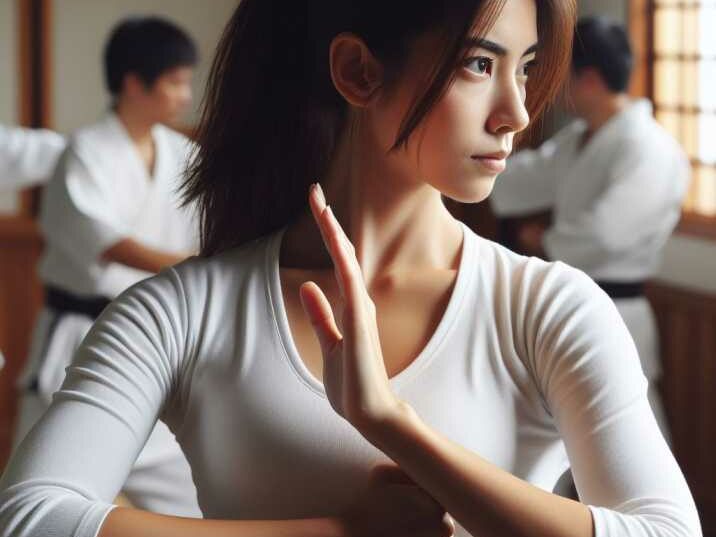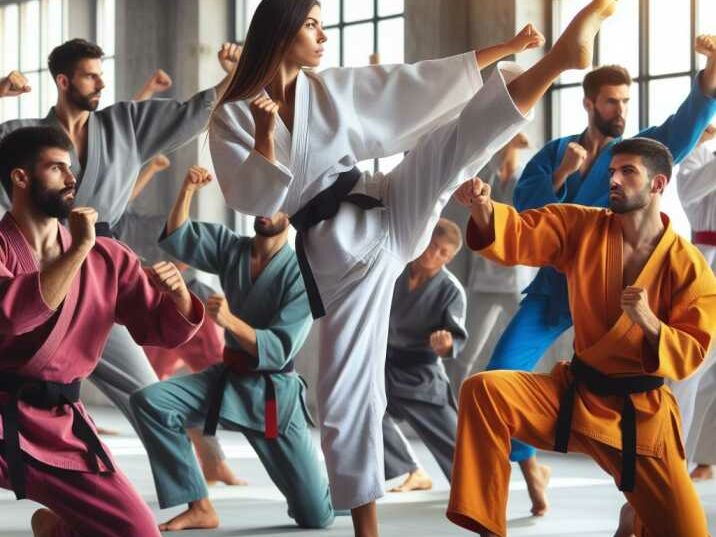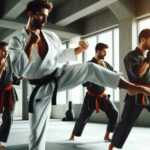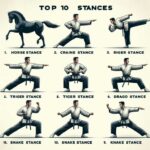Introduction:
Table of Contents
In a world where self-defense is a crucial skill, choosing the right martial art can be a daunting task. With a myriad of styles claiming to be the most effective, it’s essential to separate fact from fiction. In this comprehensive guide, we delve deep into the realm of martial arts to uncover most effective martial arts for real-life situations. From ancient traditions to modern combat techniques, let’s embark on a journey to discover the ultimate self-defense disciplines.

Table of Contents:
- Introduction
- Understanding Martial Arts Effectiveness
- The Top Martial Arts for Self-Defense
- Brazilian Jiu-Jitsu
- Muay Thai
- Krav Maga
- Boxing
- Jeet Kune Do
- Factors to Consider
- Practicality
- Adaptability
- Physical Fitness
- Mental Toughness
- Conclusion
- FAQs
Understanding Effective Martial Arts:
Martial arts encompass a wide range of disciplines, each with its unique philosophy and techniques. When evaluating their effectiveness, several factors come into play, including practical application, adaptability, physical fitness requirements, and mental fortitude. It’s important to recognize that not all martial arts are created equal when it comes to real-life self-defense scenarios.
The Top Martial Arts for Self-Defense:
1. Brazilian Jiu-Jitsu: Originating from Japan, Brazilian Jiu-Jitsu (BJJ) focuses on grappling and ground fighting. Its emphasis on leverage and technique makes it ideal for overcoming larger opponents. BJJ practitioners learn how to control and submit their adversaries, making it a highly effective martial art for self-defense.
2. Muay Thai: Hailing from Thailand, Muay Thai is renowned for its devastating striking techniques. Known as the “Art of Eight Limbs,” Muay Thai utilizes punches, kicks, elbows, and knees to incapacitate opponents. Its practicality and emphasis on full-contact sparring make it a formidable choice for self-defense.
3. Krav Maga: Developed by the Israeli military, Krav Maga is a no-nonsense self-defense system designed for real-life combat situations. It focuses on instinctive movements and efficient techniques to neutralize threats quickly. Krav Maga’s emphasis on practicality and aggression makes it highly effective in street confrontations.
4. Boxing: A classic combat sport, boxing emphasizes footwork, head movement, and powerful punches. While it lacks the grappling aspect of other martial arts, boxing’s focus on striking proficiency and defensive tactics can be invaluable in self-defense scenarios. It teaches practitioners how to generate power and maintain composure under pressure.
5. Jeet Kune Do: Created by the legendary Bruce Lee, Jeet Kune Do is not just a martial art but a philosophy of combat. It advocates for simplicity, directness, and adaptability, encouraging practitioners to use whatever techniques are most effective in a given situation. Jeet Kune Do’s eclectic approach makes it suitable for a variety of self-defense scenarios.
6. Taekwondo: Originating from Korea, Taekwondo is known for its dynamic kicking techniques and emphasis on speed and agility. While it may not focus as much on grappling or close-quarters combat, Taekwondo’s powerful strikes and defensive maneuvers make it a valuable martial art for self-defense, particularly in situations where distance management is crucial.
7. Wing Chun: Developed in China, Wing Chun is a close-range martial art that emphasizes efficiency and directness. Its principles of simultaneous attack and defense, along with its focus on trapping and striking, make it highly effective in close-quarters combat scenarios. Wing Chun’s emphasis on sensitivity and relaxation allows practitioners to neutralize opponents with minimal effort.

Factors to Consider:
Practicality: When evaluating effective martial arts, practicality is paramount. Consider how well the techniques translate to real-life situations and whether they can be applied effectively under stress.
Adaptability: The ability to adapt to different scenarios and opponents is crucial in self-defense. Look for martial arts that teach principles rather than rigid techniques, allowing practitioners to respond fluidly to changing circumstances.
Physical Fitness: Self-defense often requires physical prowess, so it’s important to choose a martial art that complements your fitness level and goals. Some styles may focus more on strength and conditioning, while others prioritize agility and flexibility.
Mental Toughness: Self-defense isn’t just about physical skill; it also requires mental resilience and situational awareness. Look for martial arts that cultivate mental toughness and teach practitioners how to stay calm and focused under pressure.
Cultural and Philosophical Aspects: Beyond its physical techniques, each martial art carries its own cultural and philosophical significance. Some styles, such as Aikido and Tai Chi, emphasize harmony and balance, while others, like Krav Maga and Systema, prioritize practicality and efficiency. Consider how well the philosophy and values of a martial art resonate with your own beliefs and goals.
Availability of Training Facilities: When choosing effective martial arts, consider the availability of reputable training facilities and qualified instructors in your area. Access to regular classes and opportunities for sparring and competition can greatly enhance your learning experience and skill development.
Cost and Commitment: Martial arts training often requires a significant investment of time, effort, and financial resources. Consider the cost of membership fees, equipment, and additional expenses associated with training. It’s important to choose a martial art that fits within your budget and lifestyle, allowing you to maintain consistent practice without undue strain.
Conclusion:
In the quest to find effective martial arts for self-defense, it’s essential to consider practicality, adaptability, physical fitness, and mental toughness. Styles like Brazilian Jiu-Jitsu, Muay Thai, Krav Maga, Boxing, and Jeet Kune Do have proven themselves time and again in real-life scenarios, making them valuable assets for anyone seeking to enhance their personal safety. By choosing the right martial art and dedicating yourself to consistent practice, you can empower yourself with the skills and confidence needed to navigate life’s challenges with ease.
FAQs:
- Which martial art is best for beginners?
- Brazilian Jiu-Jitsu and Boxing are great options for beginners due to their emphasis on technique and fundamental skills.
- Is martial arts training suitable for children?
- Yes, many martial arts schools offer programs specifically designed for children, promoting discipline, confidence, and physical fitness.
- Can martial arts help with self-confidence?
- Absolutely! Martial arts training instills a sense of accomplishment and self-assurance as practitioners progress and master new skills.
- Are there any age restrictions for learning martial arts?
- No, martial arts are suitable for individuals of all ages, from young children to seniors. It’s never too late to start!
- How often should I train to become proficient in a martial art?
- Consistency is key. Aim to train regularly, at least two to three times per week, to see progress and improvement in your skills.


